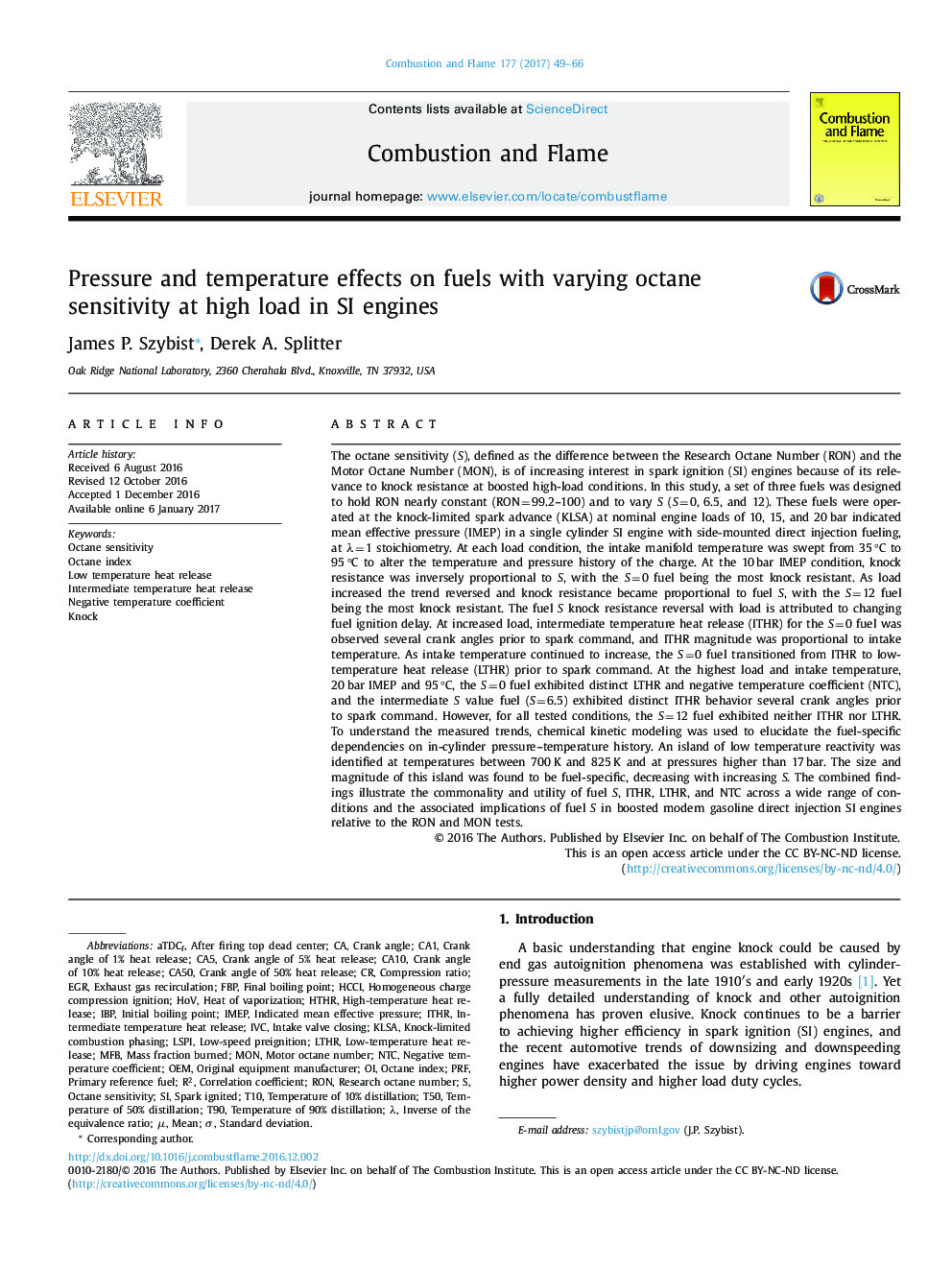| کد مقاله | کد نشریه | سال انتشار | مقاله انگلیسی | نسخه تمام متن |
|---|---|---|---|---|
| 6468531 | 1423560 | 2017 | 18 صفحه PDF | دانلود رایگان |

The octane sensitivity (S), defined as the difference between the Research Octane Number (RON) and the Motor Octane Number (MON), is of increasing interest in spark ignition (SI) engines because of its relevance to knock resistance at boosted high-load conditions. In this study, a set of three fuels was designed to hold RON nearly constant (RON = 99.2-100) and to vary S (S = 0, 6.5, and 12). These fuels were operated at the knock-limited spark advance (KLSA) at nominal engine loads of 10, 15, and 20 bar indicated mean effective pressure (IMEP) in a single cylinder SI engine with side-mounted direct injection fueling, at λ = 1 stoichiometry. At each load condition, the intake manifold temperature was swept from 35 °C to 95 °C to alter the temperature and pressure history of the charge. At the 10 bar IMEP condition, knock resistance was inversely proportional to S, with the S = 0 fuel being the most knock resistant. As load increased the trend reversed and knock resistance became proportional to fuel S, with the S = 12 fuel being the most knock resistant. The fuel S knock resistance reversal with load is attributed to changing fuel ignition delay. At increased load, intermediate temperature heat release (ITHR) for the S = 0 fuel was observed several crank angles prior to spark command, and ITHR magnitude was proportional to intake temperature. As intake temperature continued to increase, the S = 0 fuel transitioned from ITHR to low-temperature heat release (LTHR) prior to spark command. At the highest load and intake temperature, 20 bar IMEP and 95 °C, the S = 0 fuel exhibited distinct LTHR and negative temperature coefficient (NTC), and the intermediate S value fuel (S = 6.5) exhibited distinct ITHR behavior several crank angles prior to spark command. However, for all tested conditions, the S = 12 fuel exhibited neither ITHR nor LTHR. To understand the measured trends, chemical kinetic modeling was used to elucidate the fuel-specific dependencies on in-cylinder pressure-temperature history. An island of low temperature reactivity was identified at temperatures between 700 K and 825 K and at pressures higher than 17 bar. The size and magnitude of this island was found to be fuel-specific, decreasing with increasing S. The combined findings illustrate the commonality and utility of fuel S, ITHR, LTHR, and NTC across a wide range of conditions and the associated implications of fuel S in boosted modern gasoline direct injection SI engines relative to the RON and MON tests.
Journal: Combustion and Flame - Volume 177, March 2017, Pages 49-66